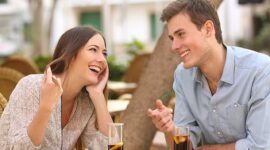Israel strikes Iran military targets, blasts reported around Tehran
Israel hit back at Iran early on Saturday October 26th 2024, saying its military was conducting strikes against military targets. The Middle East has been on edge in anticipation of Israeli retaliation for a ballistic-missile barrage carried out by Iran on October 1st 2024, in which around 200 ballistic missiles were fired at Israel. Those strikes came after Israel killed the top leadership of Iranian ally Hezbollah in Lebanon.
Hezbollah militants joined the fight against Israel in support of Hamas, the Palestinian militant group based in Gaza, also aligned with Iran, that attacked Israel on October 7th 2023. In response to months of continuous attacks from the regime in Iran against the State of Israel, the Israel Defense Forces is conducting precise strikes on military targets. Israel has the right and duty to respond to attacks from Tehran and its proxies, which have included missile strikes launched from Iranian soil.
Israel’s defensive and offensive capabilities are fully mobilized. The scope of the attack was not immediately clear, but an Israeli public broadcaster said dozens of fighter jets were striking military targets. Targets did not include energy infrastructure or nuclear facilities. United States President Joe Biden had warned that Washington would not support a strike on Tehran’s nuclear sites and Israel should consider alternatives to attacking Iran’s oil fields.
Several military bases in the west and southwest of Tehran had been targeted by Israel.
Several strong explosions were heard around the capital Tehran, in the nearby city of Karaj, and also in the Damascus countryside and central region. The origin of the explosions could be from the activation of Iran’s air defense system. Iranian authorities have repeatedly warned Israel against launching an attack, saying any strike would be met with a stronger retaliation.
Israel’s Prime Minister Benjamin Netanyahu and Defense Minister Yoav Gallant were at the military headquarters in Tel Aviv. The United States was notified by Israel ahead of its strikes on targets in Iran but was not involved in the operation. Israel is conducting targeted strikes against military targets in Iran as an exercise of self-defense and in response to its ballistic missile attack against Israel on October 1st 2024.
Fears that Iran and the United States would be drawn into a regional war have risen with Israel’s intensifying assault on Hezbollah since last month, including airstrikes on Beirut and a ground operation, as well as its year-old conflict in the Gaza Strip. United States Secretary of State Antony Blinken said on Wednesday that Israel’s retaliation should not lead to greater escalation. Israel’s defense minister said this week that enemies would pay a heavy price for trying to harm Israel.
In September 2020, the Iranian government was weighing an assassination attempt against the American ambassador to South Africa.
News of the plot came as Iran continues to seek ways to retaliate for President Donald Trump’s decision to kill a powerful general in early 2020. If carried out, it could dramatically ratchet up already serious tensions between the United States and Iran and create enormous pressure on Trump to strike back, possibly in the middle of a tense election season. United States officials had been aware of a general threat against the ambassador Lana Marks.
But the intelligence about the threat to the ambassador had become more specific. Still, attacking Marks was one of several options United States officials believed Iran’s regime was considering for retaliation since the general Qassem Soleimani was assassinated by an American drone strike in January 2020. At the time, Secretary of State Mike Pompeo said the United States killed Soleimani to reestablish deterrence against Iran.
An intelligence community directive known as “Duty to Warn” requires United States spy agencies to notify a potential victim if intelligence indicates their life could be in danger. In the case of United States government officials, credible threats would be included in briefings and security planning. Marks had been made aware of the threat. The intelligence also had been included in the CIA World Intelligence Review, known as the WIRe, a classified product that is accessible to senior policy and security officials across the United States government, as well as certain lawmakers and their staff.
Marks was sworn in as United States ambassador October 2019.
Marks had known Trump for more than two decades and had been a member of his Mar-a-Lago club in Florida. Critics of Trump had derided Marks as a “handbag designer”, but her supporters retort that she is a successful businesswoman. A personal friend of the late Princess Diana, Marks also was born in South Africa and speaks some of the country’s key languages, including Afrikaans and Xhosa.
The intelligence community was not exactly sure why Iranians would target Marks. It was possible the Iranians took Marks’ long friendship with Trump into consideration. The Iranian government also operated clandestine networks in South Africa and had a foothold there for decades. In 2015, Al Jazeera and The Guardian reported on leaked intelligence documents that detailed an extensive secret network of Iranian operatives in South Africa.
Marks might also be an easier target than American diplomats in other parts of the world, such as Western Europe, where the United States has stronger relationships with local law enforcement and intelligence services. Iran’s Islamist leaders had a history of carrying out assassinations beyond their country’s borders, as well as taking hostages, since seizing power following a popular uprising in the late 1970s. In recent decades, Iran had generally avoided directly targeting United States diplomats, although militias had long attacked American diplomatic facilities and personnel in Iraq.
Trump alleged after Soleimani’s killing that the Iranian general had been plotting attacks on American diplomatic missions, although United States officials later cast doubt on his claims.
Days after Soleimani’s death, Iran launched a ballistic missile salvo at a military base in Iraq that housed United States forces, causing traumatic brain injuries among dozens of American troops. Trump declined to retaliate and announced fresh sanctions on the Iranian regime and warned it against further retaliatory moves. Some analysts, however, said at the time that Iran likely would seek other ways to avenge Soleimani’s death.
General Kenneth McKenzie, head of United States Central Command, was at the top of Iran’s hit list in early 2020. McKenzie expected a new response from Iran to America’s ongoing presence in Iraq. McKenzie did not know what the nature of that response would be, but United States would certainly be ready for it, should it occur. McKenzie confirmed plans to cut the United States troop presence in Iraq from 5,200 to 3,000 by the end of September 2020.
During an online forum in August 2020, McKenzie said Iran was America’s central problem in the region, and acknowledged that the danger from proxies in Iraq had complicated United States efforts against ISIS, the radical Sunni terrorist organization and movement. The threat against American forces from Shia militant groups had caused United States to put resources that it would otherwise use against ISIS to provide for its own defense and that has lowered its ability to work effectively against them. The United States and Iran had been bitter foes for decades, openly confronting each other at times and gingerly engaging in diplomacy at others, but more often waging a shadowy battle for power and influence across the broader Middle East.
Under Trump, the two countries had veered toward outright military conflict on more than one occasion.
In 2019, the United States blamed Iran and its proxies for a series of explosions aimed at oil tankers. Trump nearly authorized a direct attack on Iranian soil, but he held off after being told 150 people could die, a toll he said was disproportionate. The countries’ dispute deepened in the months afterward, especially in Iraq, where Iran and the United States had long engaged in proxy warfare.
In December 2019, an American contractor was killed in Iraq after an attack by an Iranian-allied militia. The United States reacted by bombing sites held by the group, killing around two dozen of its fighters. Soon afterward, protesters believed linked to the militia breached parts of the United States Embassy compound in Baghdad. Then, in early January 2020, the United States staged an airstrike that killed Soleimani as he was visiting Baghdad.
It was a major escalation given Soleimani’s importance in Iran, although United States officials described it as a defensive measure. Soleimani led the Quds Force, a unit of Iran’s Islamic Revolutionary Guard Corps that oversees much of the country’s military activities outside its borders. Americans blame Soleimani for the death of numerous United States troops in the region.
Iran’s first major move was the January 8th 2020 missile attack on the al-Asad military base in Iraq.
But around the same time, an Iranian missile took down a civilian airliner, killing 176 people and leading to fury at the regime’s incompetence and shifting explanations for the incident, along with condemnation abroad. South Africa’s uranium deposits were believed to have been a major interest for Iran as it was ramping up its nuclear program, which Tehran had always insisted was meant for peaceful energy purposes, not a bomb. The pair also had a military relationship, having signed some basic defense pacts.
Strange plots had been uncovered before. Almost a decade ago, the United States arrested and eventually sentenced to prison a man who was alleged to have tried to hire Mexican drug cartel assassins to kill Saudi Arabia’s ambassador to America as he dined in Cafe Milano, a swanky Washington restaurant frequented by the city’s wealthy and powerful. The United States accused Soleimani of overseeing the plot.
Related Posts
-
 How Much Longer Will India Be Kept Out Of UN’s Decision-Making Body
India Prime Minister Narendra Modi made a strong pitch for a more prominent role in the United Nations (UN) Security Council, the global
How Much Longer Will India Be Kept Out Of UN’s Decision-Making Body
India Prime Minister Narendra Modi made a strong pitch for a more prominent role in the United Nations (UN) Security Council, the global
-
 Can you tell when someone is Flirting? Kansas Researchers classify the most effective Facial Cues including slight smiles and head tilts
When it comes to flirting, it is all in a look, according to researchers at the University of Kansas. The University of Kansas
Can you tell when someone is Flirting? Kansas Researchers classify the most effective Facial Cues including slight smiles and head tilts
When it comes to flirting, it is all in a look, according to researchers at the University of Kansas. The University of Kansas